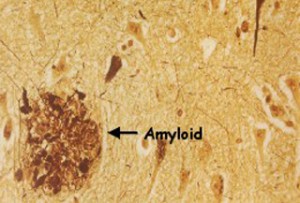Mar 24 2015
Ultrasound for Alzheimer’s Disease
 A new study published in Science Translational Medicine concerning a possible new treatment for Alzheimer’s disease is getting quite a bit of play on social media. While it is an interesting study, and excitement over any scientific study is great to see, I also think it’s important to always put such studies into a reasonable context (which is rarely done well).
A new study published in Science Translational Medicine concerning a possible new treatment for Alzheimer’s disease is getting quite a bit of play on social media. While it is an interesting study, and excitement over any scientific study is great to see, I also think it’s important to always put such studies into a reasonable context (which is rarely done well).
Alzheimer’s disease (AD) is a devastating chronic degenerative brain disease in which neurons slowly die over years, causing memory loss of eventually overall cognitive impairment. Nancy Reagan described her husband Ronald’s AD as a “very long goodbye.” My grandmother died of AD, and it’s likely many of her relatives did as well, but in her it was confirmed at autopsy. About 75% of all dementia cases are due to AD:
The pooled data of population-based studies in Europe suggests that the age-standardized prevalence in people 65+ years old is 6.4 % for dementia and 4.4 % for AD.3 In the US, the study of a national representative sample of people aged >70 years yielded a prevalence for AD of 9.7 %.
In short, this is a common and serious disease. Most people will have a family member or know someone with AD. Further, as our population ages the incidence of AD will increase as a matter of course.
At present there is no cure for AD or treatment that significantly alters the course of the disease. Current medications are symptomatic, moderately increasing function but not altering the slope of cognitive decline. Research is making steady progress, but the disease has proven to be very complex. Researchers now recognize that AD is a result of a complex combination of genetics, environmental, and lifestyle factors. It has also been well established that a prominent feature of AD is the collection of Amyloid Beta protein, which is normally soluble. The protein then undergoes misfolding, and the misfolded protein clumps together, resulting in toxicity that eventually kills the neuron. That is not the whole story, however, and researchers are still trying to tease out further details.
Because there is so much active research into AD I frequently see press releases promising some sort of AD breakthrough – a new piece to the puzzle falling into place, a new way to diagnose AD early, or a potential new treatment approach. These are often genuine scientific advances, but they are incremental, and rarely directly lead to a new therapeutic intervention, or still require years of research to see how they will pan out. It’s easy, however, to get caught up in the headlines promoting every new tiny advance.
The latest research from Science is a good example. The study is, Scanning ultrasound removes amyloid-β and restores memory in an Alzheimer’s disease mouse model, by Gerhard Leinenga and Jürgen Götz. They used ultrasound to reduce the blood brain barrier and stimulate microglia, cells which would normally clean up Amyloid Beta. They found that in 75% of the mice studied there was a significant decrease in Amyloid plaques, and some of those mice had improved function on memory testing in a maze.
This is a genuinely exciting result, as ultrasound is a novel and rather non-invasive treatment option. The results are also very promising. But here now are the caveats that any responsible science journalist should note.
The mouse models of AD are not perfect models of the human disease. Specifically, in some mouse models of AD it seems that the clumped Amyloid Beta causes cognitive impairment, but it is unclear if this is also the case in human AD. While clearing plaque may slow decline, and can conceivably improve function of still living neurons, it will not restore dead neurons, so any loss of memory or cognitive function due to dead neurons is permanently gone.
In fact some researchers believe that in humans the Amyloid plaques are more of a downstream effect of AD and not the underlying cause. It is not clear how important they are in causing AD itself.
The current study should be considered preliminary and exploratory. This is the kind of research that is very interesting and useful to other researchers, but should be of very limited interest to the general public. Most research at this stage does not translate to a specific treatment in humans.
I certainly hope that this research does bear fruit. I would love nothing more than for there to be an effective treatment for AD. This approach may also apply to other neurodegenerative diseases. It is just way too early to tell.
This is also a general pattern in the way scientific research progresses vs how it is reported. Battery and solar technology are very similar – you can read just about every week about some new breakthrough in battery or solar technology, but the reporting rarely puts the preliminary research into proper context, and then you never hear about these amazing breakthroughs again. Meanwhile, the science continues to progress incrementally. Incremental advances (the reality), however, do not make good headlines. Breakthroughs (rarely the reality) do.






